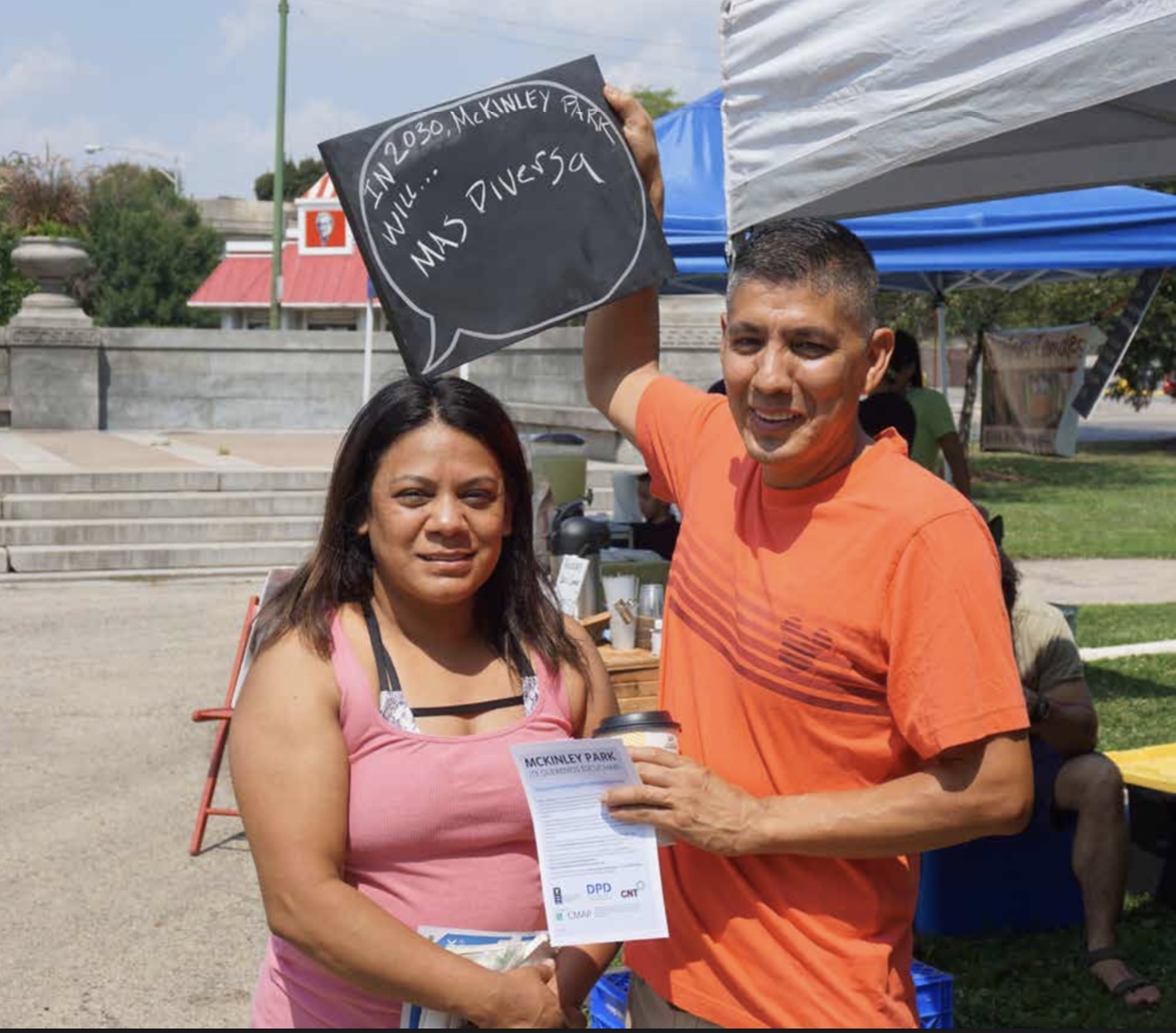The Chicago Metropolitan Agency for Planning recently released a comprehensive plan for McKinley Park, a working-class Southwest Side neighborhood. The community-driven plan is the first of its kind. The McKinley Park Neighborhood Plan is the culmination of two years of work led by the McKinley Park Development Council, the Chicago Department of Planning, and CMAP, with “extensive” input from McKinley Park residents, business and property owners, and community leaders.
According to CMAP, more than 800 residents and other stakeholders provided input for the plan. The report states that most participants want to maintain the industrial heritage of the neighborhood, but have health and quality of life concerns about current industrial activity. Participants would like to see a new direction for industry in their neighborhood. Gentrification, displacement, and safety for those walking and biking in the community were also identified as top concerns.The McKinley Park neighborhood plan has six overarching goals:
- Preserve neighborhood diversity through maintaining a range of housing options, supporting local businesses, and celebrating McKinley Park’s culturally, ethnically, and linguistically diverse residents.
- Promote equitable transit-oriented development.
- Revitalize commercial corridors through identifying infrastructure improvements that allow easeful movement for all transportation modes.
- Modernize the Central Manufacturing District by targeting new sustainable development and reuse projects to maintain local jobs and ensure residents’ wellbeing.
- Enhance and expand parks and recreational opportunities.
- Create a resilient community.
I am going to focus on goals 1, 2, and 3. The McKinley Park plan recognizes that the community is more affordable than many other Chicago neighborhoods. However affordability is threatened by gentrification. Residents and stakeholders identified affordable housing as the main draw to the neighborhood. The plan recommends a variety of strategies to maintain housing affordability and choice. These include the formation of a neighborhood coalition to coordinate housing advocacy efforts, advocate for the protection and expansion of on-site affordable housing, working with DPD to tailor citywide programs to McKinley Park residents. Another recommended strategy is working with key partners like the city of Chicago and the Illinois Housing Development Authority to identify opportunities to implement inclusive and supportive housing.
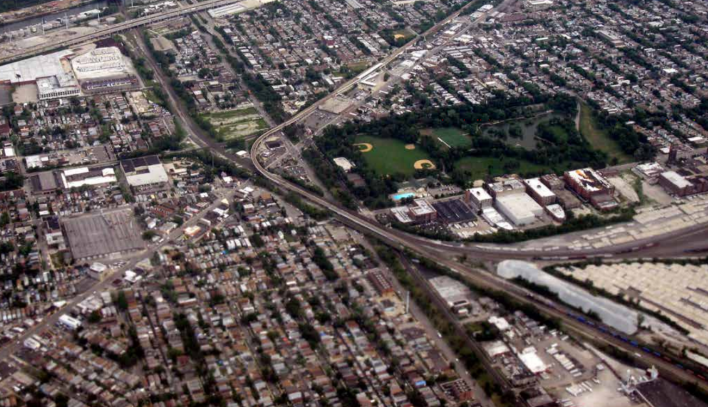
I really enjoyed the section of the plan that discussed engaging the diverse community in McKinley Park. Thirty six percent of McKinley residents are foreign-born. Another interesting factoid is that McKinley park saw a sixteen percent increase in Asian residents 2010 to 2016 as the greater Chinatown community expanded southwest.
McKinley Park’s diversity will require a variety of community engagement strategies. “Throughout the planning process it was difficult to fully engage McKinley Park’s growing Asian population, despite a sincere interest in engaging them," the plan states. "Difficulties ranging from language barriers to different cultural expectations about the role of civic organizations can complicate efforts to connect. Steps should be taken to ensure that foreign-born residents and stakeholders are provided with the same opportunities to engage in community planning activities as other resident groups.”
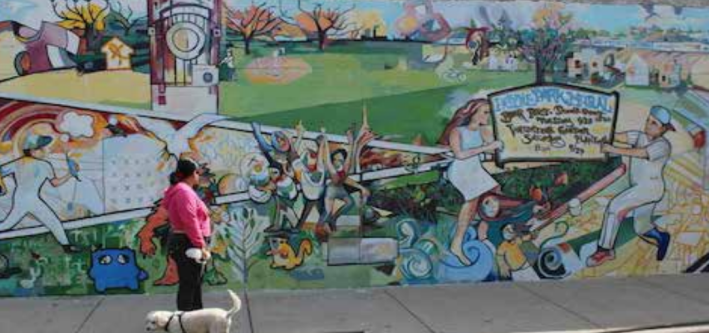
The plan recommends looking into the Immigration Integration Toolkit developed by The Metropolitan Mayors Causes and CMAP for case studies that can be successfully implemented in McKinley Park. Accessible public engagement will be a key component to McKinley Park’s success in implementing their plan. A diversified community engagement strategy providing incentives for public participation, and an agenda that reflects the community’s priorities and ensures that there is a shared understanding of the goals and purpose of meetings, are necessary components.
McKinley Park is also home to a large youth population; 27.5 percent of the population is young people. The plan acknowledges that youth were not well represented during the planning process and that numerous initiatives within the plan will be more successful if they engage youth, such as beautification initiatives to revitalize commercial corridors ,and the promotion of active transportation and healthy living through programs and activities.
McKinley Park residents recognize the benefits of transit-oriented development, yet have concerns about gentrification. One neighbor is quoted as saying, “We need the density to support and attract local businesses but it [transit-oriented housing] should include affordability and preservation of the neighborhood’s diversity and character.”
Recommendations for promoting equitable transit-oriented development include the McKinley Park Development Council creating a subsidiary (like a community development corporation) to ensure the community’s voice is being heard when developers show up with new proposals. Partnering with existing organizations with greater ties to the community to lead engagement and advocacy efforts was also recommended.
In addition, strategic partnerships were mentioned as a way to preserve the current housing affordability. The report cited the ROOTS program (Renters Organizing Ourselves to Stay) – a joint effort of Communities United, Enterprise Community Partners, and the Chicago Metropolitan Housing Development Corporation – which has resulted in two-to-four-flat buildings being rehabilitated and rented at below-market rates.
The area around the 35th/Archer Orange Line is a location where residents want multi-family housing development. (Recently a developer planned to squander land across the street from the station with a drive-through doughnut shop, but local alderman George Cardenas intervened to put the brakes on that project.) The area is currently outside of a tax-increment financing district, yet it’s possible for the TIF boundaries surrounding the area to be modified.
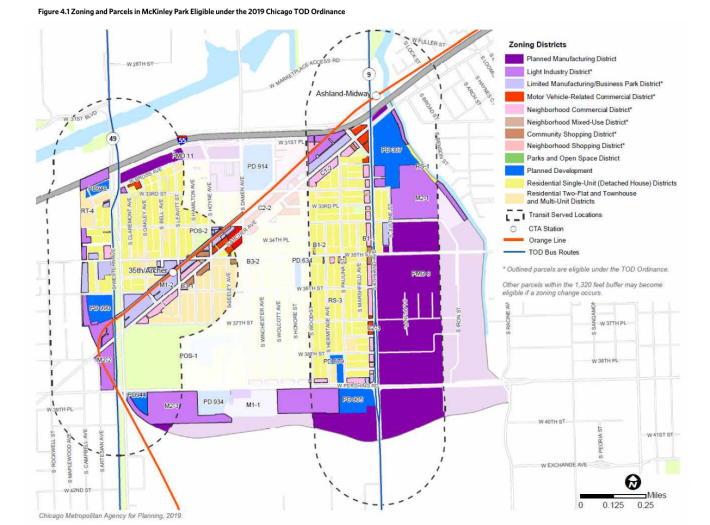
I really appreciated a part in the report that discussed involving community stakeholders to identify uses for ground floor use of a mixed-used building other than retail, such as civic facilities, childcare, a health clinic, arts/theater/museum space, or a library, among other uses. Those involved with the plan noted that McKinley Park has a high number of vacant storefronts, like many other Chicago neighborhoods, and it will be important to create spaces that will meet the community’s needs.
Commercial corridors in McKinley Park have heavy motor vehicle traffic which makes walking and biking unsafe and unpleasant. One of the recommendations of the plan is to make Archer Avenue a more people-friendly street. Along with the high traffic volumes, including heavy freight traffic, Archer has a dense concentration of shops and restaurants as well as both the 35th/Archer and Ashland Orange Line stations. Wider sidewalks are recommended. Currently Archer has narrow sidewalks that make walking uncomfortable and fail to meet ADA requirements.
The plan recommends targeted safety improvements at key intersections along Archer: Ashland, Leavitt, Damen, and Western. For example, pedestrian islands and wider sidewalks were identified as potential improvements to Archer & Ashland. These changes would add safety and comfort for people traveling to the Orange Line, nearby CTA bus stops, and businesses along Ashland.
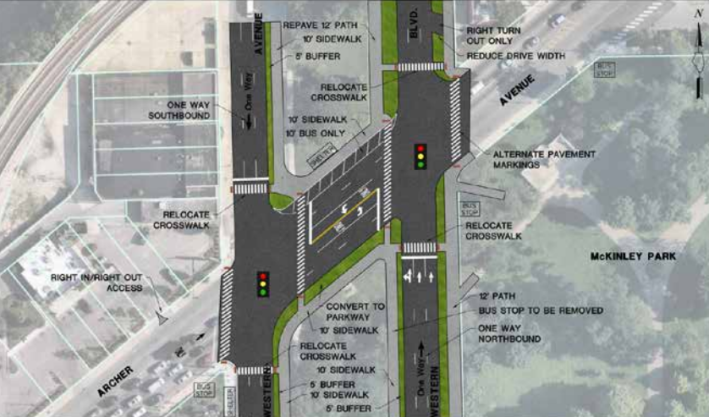
I was intrigued by the recommendation to activate and celebrate Western Boulevard. Stakeholders expressed a desire to celebrate the boulevard as a community amenity for public gatherings, celebrations, and recreational use. Improving traffic safety and reconfiguring Western will be necessary to provide new green space and wider sidewalks. Multigenerational gathering spots, community gardens, public art, cultural installations, and stormwater management features would be possible with a reconfiguration.
Lastly, increasing the number of trips made by walking and biking can activate neighborhood sidewalks and improve the health of the community. Currently McKinley Park has very limited bike infrastructure. Archer was identified in the Chicago Streets for Cycling Plan 2020 as a bike-priority "Spoke Route" but only the northernmost couple of miles of Archer have any kind of bikeway treatment, with none in McKinley Park. Currently truck traffic and high speeds by drivers create a hostile environment for cyclists.
The plan recommends that McKinley Park Development Corporation lobby the Chicago Department of Transportation to install bike lanes on Archer in the neighborhood. Traffic calmed "Neighborhood Greenway" side street routes were also recommended. The plan suggests that CDOT explore the feasibility of two neighborhood greenways: Leavitt from 37th St. to Bross Avenue (just south of the Stevenson Expressway), and along Wood Street from Pershing Avenue to Archer. Leavitt would provide access to the 35th/Archer station, and Wood would connect to a number of schools and the McKinley Park Library.
I found the McKinley Park neighborhood plan to be very enjoyable to read. I hope that the recommendations in this document are actually implemented. Many Chicagoans have been involved in the shaping of numerous plans, and it’s pretty common for those studies to sit on a shelf collecting dust. Hopefully the story will be different in McKinley Park.
